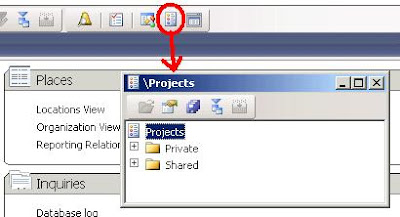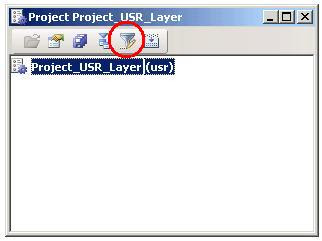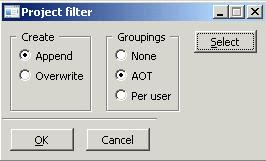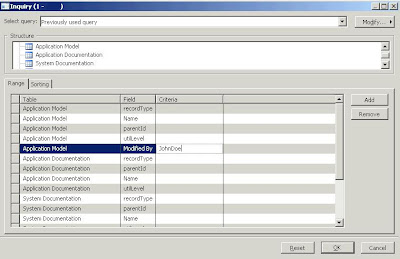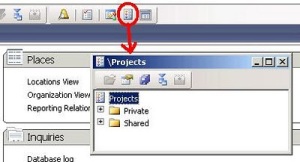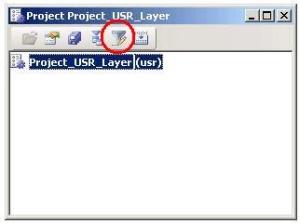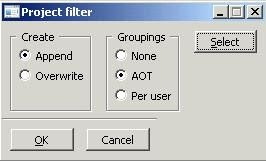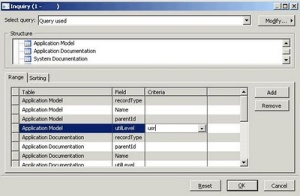private void createQuery()
{
Query query = new Query();
QueryBuildDataSource qbdsCUstTable;
QueryBuildDataSource qbdsAccType;
QueryBuildDataSource qbdsConRes;
QueryBuildDataSource qbdsConnection;
QueryBuildDataSource qbdsConStatus;
QueryBuildDataSource qbdsDevice;
QueryBuildDataSource qbdsConfigHist;
QueryBuildDataSource qbdsDeviceStatus;
QueryBuildDataSource qbdsFreqHist;
QueryRun queryRn;
Name tmpName;
FcsDateTime tmpDateTime = FcsDateTimeAPI::dateNow();
McsConfigurationHistory configHistLocal;
FcsDateTime startDateLocal,endDateLocal;
str seprator = McsParameters::find().FedSBMDownloadSeperator;
McsFedOMDivision division;
McsFedOMSubDivision subDivision;
McsFedOMSection section;
McsEmCalcCalculatedConsumption calCOnsumption;
McsConnectionMember conMember;
;
qbdsCUstTable = query.addDataSource(tableNum(CustTable));
//.............added by aslam
if(DivisionId)
{
qbdsCUstTable.addRange(fieldNum(CustTable,FedDivisionId)).value(DivisionId);
}
if(SubDivId)
{
qbdsCUstTable.addRange(fieldNum(CustTable,FedSubDivId)).value(SubDivId);
}
if(SectionId)
{
qbdsCUstTable.addRange(fieldNum(CustTable,FedSectionId)).value(SectionId);
}
if(cycleCode)
{
qbdsCUstTable.addRange(fieldNum(CustTable,FedCycleCode)).value(cycleCode);
}
//...............end by aslam
qbdsAccType = qbdsCUstTable.addDataSource(tableNum(McsAccountTypeHistory));
qbdsAccType.addLink(fieldNum(custTable,AccountNum),fieldNum(McsAccountTypeHistory,CustomerId));
// qbdsAccType.joinMode(JoinMode::InnerJoin);
qbdsAccType.addRange(fieldNum(McsAccountTypeHistory,AccountType)).value(queryValue(McsGlobal::getDefaultAccountTypeMainRelation()));
qbdsAccType.addRange(fieldNum(McsAccountTypeHistory,ValidUntilDate)).value(queryValue(FcsDateTimeAPI::DateNull()));
qbdsConRes = qbdsAccType.addDataSource(tableNum(McsConnectionResponsible));
qbdsConRes.addLink(fieldNum(McsAccountTypeHistory,Id),fieldNum(McsConnectionResponsible,AccountTypeHistoryId));
qbdsConRes.addRange(fieldNum(McsConnectionResponsible,ValidUntilDate)).value(queryValue(FcsDateTimeAPI::DateNull()));
//qbdsConRes.joinMode(JoinMode::InnerJoin);
qbdsConnection = qbdsConRes.addDataSource(tableNum(McsConnection));
qbdsConnection.addLink(fieldNum(McsConnectionResponsible,ConnectionId),fieldNum(McsConnection,Id));
//qbdsConnection.addOrderByField(fieldNum(McsConnection,Id),SortOrder::Ascending);
//qbdsConnection.joinMode(JoinMode::InnerJoin);
qbdsConStatus = qbdsConnection.addDataSource(tableNum(McsConnectionStatusHistory));
qbdsConStatus.addLink(fieldNum(McsConnection,Id),fieldNum(McsConnectionStatusHistory,ConnectionId));
qbdsConStatus.addRange(fieldNum(McsConnectionStatusHistory,ConnectionStatus)).value(queryValue(McsStatuses::Active));
qbdsConStatus.addRange(fieldNum(McsConnectionStatusHistory,ValidUntilDate)).value(queryValue(FcsDateTimeAPI::DateNull()));
//qbdsConStatus.joinMode(JoinMode::InnerJoin);
/*qbdsFreqHist = qbdsConnection.addDataSource(tableNum(McsCmBilBilFrequencyHistory));
qbdsFreqHist.addLink(fieldNum(McsConnection,Id),fieldNum(McsCmBilBilFrequencyHistory,Connectionid));
qbdsFreqHist.addRange(fieldNum(McsCmBilBilFrequencyHistory,ValidUntilDate)).value(queryValue(FcsDateTimeAPI::DateNull()));
qbdsFreqHist.addRange(fieldNum(McsCmBilBilFrequencyHistory,DataAreaId)).value(queryValue('((LastBillingDate < EndDate) || (EndDate == 0))'));
//qbdsFreqHist.addRange(fieldNum(McsCmBilBilFrequencyHistory,NextBillingDate)).value(queryValue(FcsDateTimeAPI::addDayLocal(this.parmEndDate(),1)));
qbdsFreqHist.addSortField(fieldNum(McsCmBilBilFrequencyHistory,StartDate),SortOrder::Ascending);
qbdsFreqHist.joinMode(JoinMode::InnerJoin);*/
qbdsConfigHist = qbdsConStatus.addDataSource(tableNum(McsConfigurationHistory));
qbdsConfigHist.addLink(fieldNum(McsConnectionStatusHistory,ConnectionId),fieldNum(McsConfigurationHistory,ConnectionId));
qbdsConfigHist.addRange(fieldNum(McsConfigurationHistory,ValidUntilDate)).value(queryValue(FcsDateTimeAPI::DateNull()));
//qbdsConfigHist.joinMode(JoinMode::InnerJoin);
qbdsDevice = qbdsConfigHist.addDataSource(tableNum(McsMeterDevice));
qbdsDevice.addLink(fieldNum(McsConfigurationHistory,MeterDeviceId),fieldNum(McsMeterDevice,Id));
qbdsDevice.addRange(fieldNum(McsMeterDevice,FedPhase)).value(queryValue(McsFedPhases::ThreePhase));
//qbdsDevice.joinMode(JoinMode::InnerJoin);
qbdsDeviceStatus = qbdsDevice.addDataSource(tableNum(McsMeterDeviceStatusHistory));
qbdsDeviceStatus.addLink(fieldNum(McsMeterDevice,Id),fieldNum(McsMeterDeviceStatusHistory, MeterDeviceId));
qbdsDeviceStatus.addRange(fieldNum(McsMeterDeviceStatusHistory,MeterDeviceStatus)).value(queryValue(McsStatuses::Active));
qbdsDeviceStatus.addRange(fieldNum(McsMeterDeviceStatusHistory,ValidUntilDate)).value(queryValue(FcsDateTimeAPI::DateNull()));
//qbdsDeviceStatus.joinMode(JoinMode::InnerJoin);
queryRn = new QueryRun(query);
totalRecords = SysQuery::countLoops(queryRn);
progress.setCaption("Downlaod Customer");
progress.setAnimation(#aviUpdate);
progress.setTotal(totalRecords);
progress.update(true);
totalRecords = 0;
while (queryRn.next())
{
//custTable.clear();
//meterDevice.clear();
//Connection.clear();
//configHistLocal.clear();
custTable = queryRn.get(tableNum(CustTable));
meterDevice = queryRn.get(tableNum(McsMeterDevice));
Connection = queryRn.get(tableNum(McsConnection));
configHistLocal = queryRn.get(tableNum(McsConfigurationHistory));
progress.setText("Exporting Customer " + custTable.name());
progress.update(true);
//Consumer No. ---1
tb.setText(tb.getText() + strFmt("%1%2",custTable.McsExternalID1,seprator));
//Old K Number----2
tb.setText(tb.getText() + strfmt("%1%2",custTable.McsExternalId3,seprator));
//Tariff Code ----3
tb.setText(tb.getText() + strfmt("%1%2",custTable.CustGroup,seprator));
//Meter Serial Number---4
tb.setText(tb.getText() + strfmt("%1%2",meterDevice.MeterDeviceSerialNumber,seprator));
//Consumer Name---5
tb.setText(tb.getText() + strfmt("%1%2",subStr(custTable.name(),1,20),seprator));
//Address---6
tb.setText(tb.getText() + strfmt("%1%2",subStr(custTable.address(),1,20),seprator));
//Cycle Display Code----7
tb.setText(tb.getText() + strfmt("%1%2",custTable.FedCycleCode,seprator));
//Route Nbr---8
tb.setText(tb.getText() + strfmt("%1%2",custTable.FedRouteNbr,seprator));
//Division---9
division.clear();
select DisplayCode from division
where division.DivisionId == custTable.FedDivisionId;
tb.setText(tb.getText() + strfmt("%1%2",division.DisplayCode,seprator));
//SubDivision---10
subDivision.clear();
select DisplayCode from subDivision
where subDivision.SubDivId == custTable.FedSubDivId;
tb.setText(tb.getText() + strfmt("%1%2",subDivision.DisplayCode,seprator));
//section---11
section.clear();
select DisplayCode from section
where section.SectionId == custTable.FedSectionId;
tb.setText(tb.getText() + strfmt("%1%2",section.DisplayCode,seprator));
//BillMonth---12
select EndDate from calCOnsumption
order by EndDate desc
exists join conMember
where conMember.Id == calCOnsumption.ConnectionMemberId
&& calCOnsumption.ValidUntilDate == 0
&& conMember.ValidUntilDate == 0
&& conMember.ConnectionId == Connection.Id
&& conMember.ConnectionMemberType == McsConnectionMemberTypes::mmrcons;
tb.setText(tb.getText() + strfmt("%1",date2str(FcsDateTimeAPI::convertToDateLocal( calCOnsumption.EndDate),123,0,0,3,3,2)));
tb.setText(tb.getText() + strfmt("\n"));
progress.incCount();
progress.update(true);
}
}
